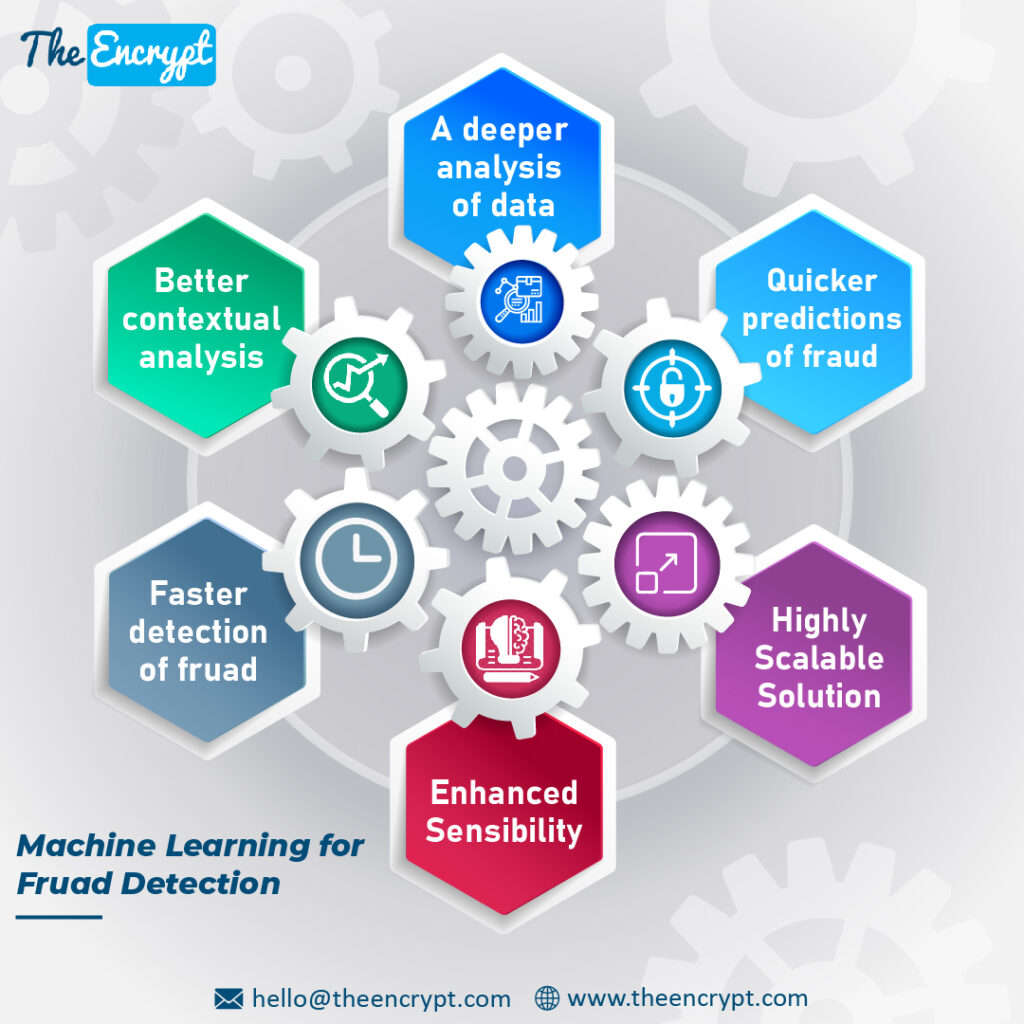
A technology blessing is machine learning. It is the most effective application of data science that comes to mind. Machine learning has been working miracles in the modern day when combined with artificial intelligence. Why must fraud detection use machine learning?
While frauds and scams are harming the internet world, machine learning has the power to stop it. Yes, ML can spot frauds involving online purchases, identity theft, and shady logins.
How is it possible? We do have the answers to all of your queries. So read on to see how ML is used to prevent and identify fraud.
How does ML detect and prevent fraud?
If you lack familiarity with ML and its techniques, here’s a straightforward explanation of its operation in countering fraud detection and prevention. Machine learning works on your historical data relating to fraudulent actions.
The data works with a machine learning algorithm to train an ML engine. The ML engine then suggests risk rules to block or allow a certain user activity. The accuracy and precision of ML results depend on how you flag your previous fraud and non-fraud cases. It helps to avoid false positives, thus making the ML model more accurate.
What are the steps involved in fraud detection and prevention using ML?
Machine learning engines follow a series of steps to detect fraud. It learns from the input data to suggest risk rules. But it is more complex than it sounds and involves a sophisticated process. So, let us go through each step of fraud detection using ML.
Input data
Every machine learning process starts with the collection and input of data. In the case of fraud detection and prevention, ML collects data from your online transactions involving transaction value, product SKU, mode of transaction, etc.
It may also be interested in the data associated with your interaction with the payment site, such as IP data, VPN, proxy, etc. The more data you feed to a machine learning algorithm, the better results you obtain with fraud detection and prevention. Also, the data may labelled or unlabelled based on the ML algorithm you are using.
Extract features
The next important step for a machine learning engine is to analyse the data and extract features from it. The features include customers’ behaviour and terms as good or bad. The latter case accounts for fraudulent behaviour.
The machine learning engine accepts features regarding the customer’s identity, location, network, orders, and the chosen payment methods. However, it is not limited to only these features and depends on the complexity of the fraud detection and prevention system.
Train algorithm
Now you need to train the machine learning engine. In this step, a machine learning training algorithm is launch, which helps the ML model differentiate between fraudulent and legitimate activities. The algorithm includes a set of instructions for the ML model to follow.
The model accepts a training set of data provided by the business organization wanting to implement fraud detection. High amounts of data increase the accuracy and precision of ML models.
Create model
Finally, you can develop an ML model to serve the client’s fraud detection and prevention needs. The training data set helps the machine learn and identify fraudulent activities accurately.
So, whenever the model is test with a new set of data, it helps you detect whether it is fraud. But it does not end here. While your ML model may work effectively for fraud detection and prevention, it needs to be constantly updated with time. This is a blow against the new tricks and tactics of fraudsters for online thefts and unauthorised logins.
What are the advantages of Machine Learning for fraud detection and prevention?

Machine Learning comes with many benefits as far as fraud detection and prevention are concerned. It sheds the load of manually processing large amounts of data to detect fraud. Besides, other factors give an upper hand to machine learning.
Fast operations
Machine learning is a faster way to deal with tonnes of data and detect suspicious behaviours. On the other hand, analysing the data manually and detecting fraud can consume months of your time.
Reduced review time
One of the most essential tasks in fraud detection and prevention is analysing the data points and reviewing the information. While dealing with this manually can consume much time, machine learning can speed up reviewing information.
Cost-effective
Machine Learning systems can be highly cost-effective for any business organization looking to implement fraud detection and prevention. Companies spend a fortune strengthening their risk management system yet fail to avoid leaks and frauds. But machine learning systems save you from investing tonnes in risk management with a single effective algorithm to detect and prevent fraud efficiently.
Precise predictions
Machine Learning algorithms work well with large datasets and give precise and accurate predictions. The algorithms can find patterns more effectively with large amounts of data. But the process can be nasty with human interference.
These advantages of Machine Learning make them superior to be used in fraud detection and prevention, thus eliminating the load on humans.
Are there any disadvantages of Machine Learning for fraud detection?
Machine Learning is undoubtedly a versatile technology to reduce online fraud and scams. But it also comes with a few disadvantages, which an organization must consider before implementing ML.
False positives
Machine Learning systems are often associate with errors. False positives are one among them. It treats a false case as a positive result for the machine.
In this case, a non-fraudulent activity may be fed as fraud, thus disrupting the whole system. Hence, the machine will take a legitimate case as a suspicious activity, making it less precise and unreliable.
Less control
ML systems may face a loss of control, thus leading to blunders. It is mostly true for some ML engines that make mistakes difficult to notice. Hence, such machine learning systems may not be suitable for preventing fraudulent activities.
Lack of human intelligence
No matter the effectiveness of Artificial intelligence, human intelligence always needs to be updated. So, there are cases where only human intelligence can detect and solve fraud cases because humans can better understand user actions and behaviours.
Hence, these disadvantages always accompany machine learning systems, which is also true for fraud detection and prevention.
Conclusion
Machine Learning is a blessing in today’s scenario. While online transactions are making lives easier, they also threaten users’ online presence, thus giving rise to identity thefts and fraudulent transactions.
But ML provides a helping hand by bringing forth an effective system to identify theft and suspicious activities. Machine Learning algorithms make it possible to deal with large chunks of data and predict illegitimate behaviours and patterns. So, if you are looking for a fast, accurate, and precise technology to detect fraud and prevent them, Machine Learning is the way.
